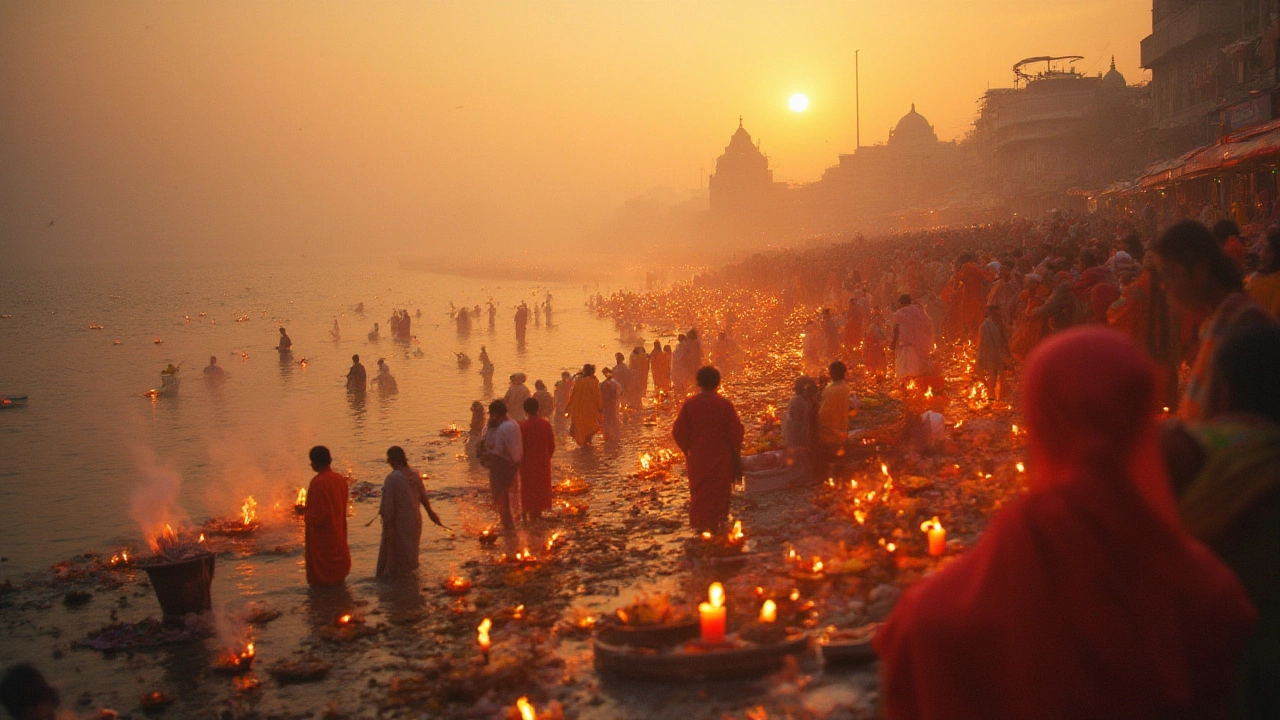Hindu Rituals: Simple Guides to Everyday Practices
If you’re curious about what Hindu rituals really involve, you’re in the right place. Below you’ll find clear explanations that you can try at home, whether you’re new to the faith or just want to refresh your memory.
Daily Rituals You Can Start Today
Most Hindu families start the day with a short puja (worship) at a home altar. All you need is a clean space, a small statue or picture of a deity, a lamp, and some incense. Light the lamp, say a few simple prayers, and offer water or fruit. This routine helps set a calm tone for the day and doesn’t take more than five minutes.
Another easy habit is the practice of sandhya – a short meditation at sunrise and sunset. Find a quiet spot, close your eyes, and repeat a mantra like “Om” or the name of your preferred deity. Even a minute of focused breathing can make a big difference in how you feel.
If you have a kitchen, try the ritual of annaprasana when you cook. Before you start, sprinkle a few grains of rice in the cooking pot and say a quick thank‑you for the food. It’s a small gesture that connects you with the idea of gratitude for every meal.
Festive Rituals and Their Significance
Festivals are the colorful side of Hindu rituals. Take Diwali, the Festival of Lights. Families clean their homes, light oil lamps, and share sweets. The story behind it is the return of Lord Rama to his kingdom, but the practical side is that lighting lamps brightens the house and lifts spirits.
Another popular celebration is Holi, the spring color festival. The ritual involves throwing colored powder, dancing, and sharing food. It marks the victory of good over evil and the arrival of spring. If you’re hosting a Holi gathering, keep the powder non‑toxic, set up a water station, and let guests enjoy the mess safely.
For those who can’t travel to a temple, many festivals have a home version. During Navratri, you can set up a simple altar, light a lamp each evening, and recite short verses dedicated to the goddess. The key is consistency – doing the same act each night builds the feeling of celebration.
When you attend a community ceremony, you’ll notice the use of prasad – blessed food that is shared with everyone. Accepting prasad is a way of receiving the deity’s blessings. If you’re invited, take a small portion, thank the host, and enjoy the taste of togetherness.
Finally, remember that rituals are personal. You don’t have to follow every rule perfectly. Start with one practice that feels easy, notice how it affects your mood, and add another when you’re ready. The goal is to bring a sense of peace and connection, not to create stress.
In short, Hindu rituals range from quick daily pujas to elaborate festival celebrations. By picking a few simple steps – lighting a lamp, saying a mantra, or sharing a sweet – you can experience the depth of these traditions without overwhelming yourself. Give one habit a try this week and see how it changes your outlook.
- Arjun Bhardwaj
- 11-07-25
- Indian Culture
Sacred Rituals of India: Uncovering Ancient Traditions and Their Meaning Today
Discover the sacred rituals of India, their deep roots in the country's heritage, and how millions practice them today. Explore facts, customs, and advice for understanding these age-old traditions.
Details